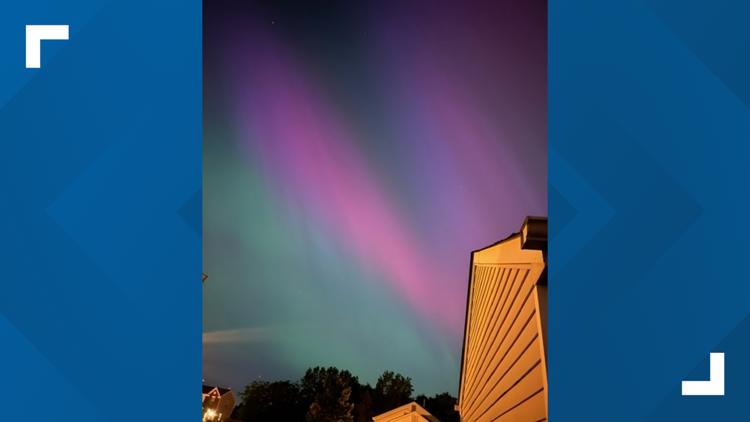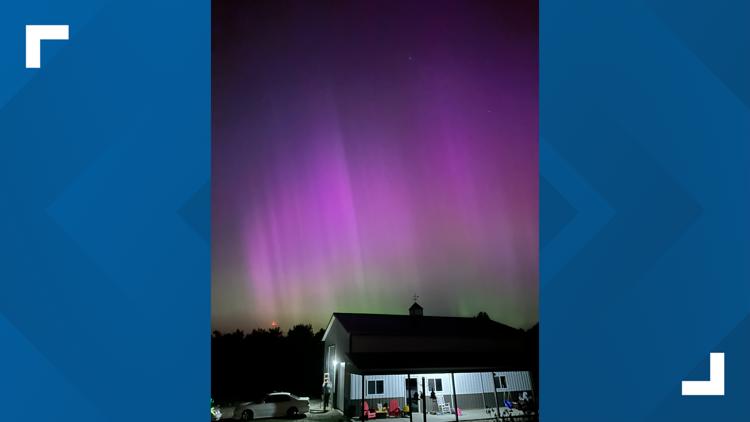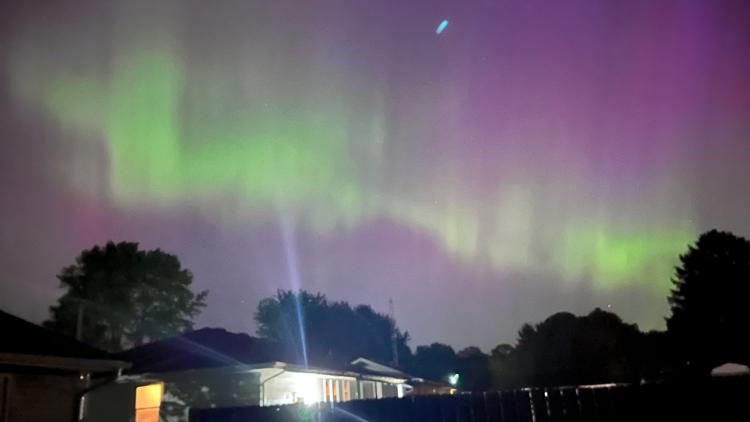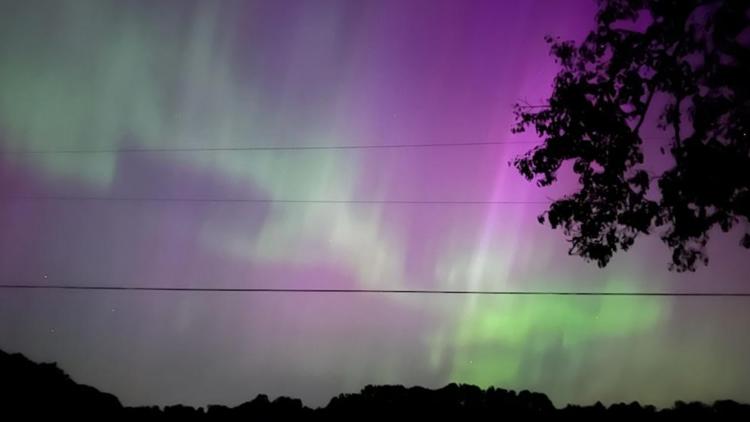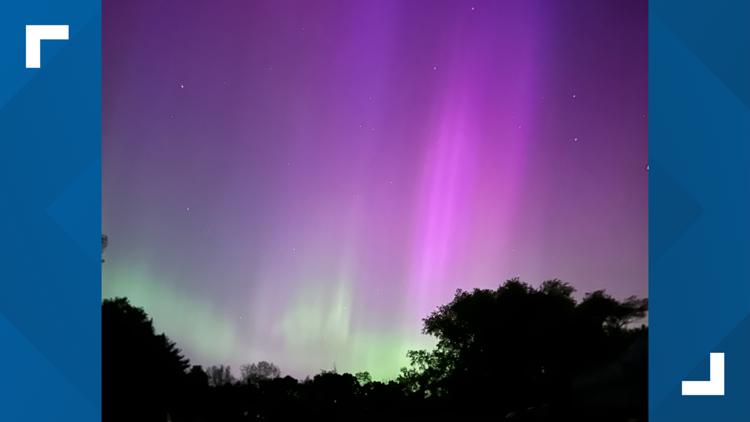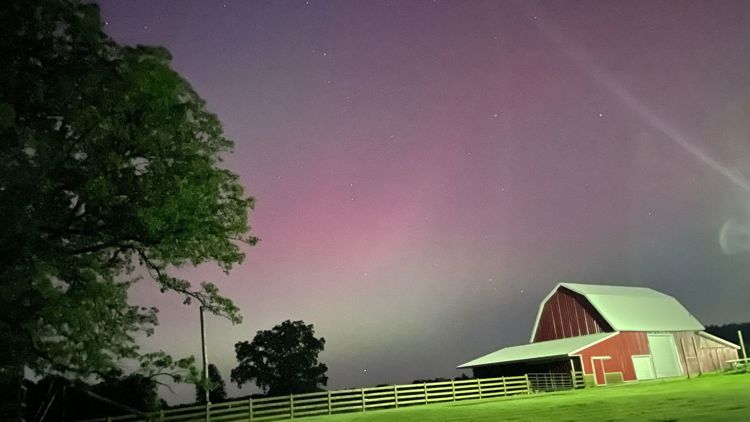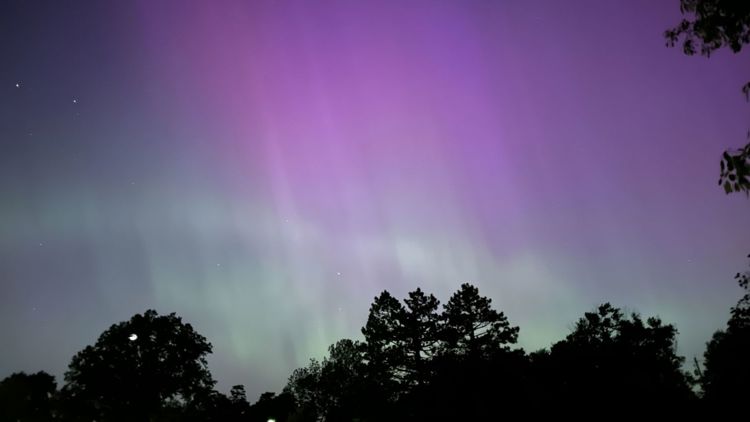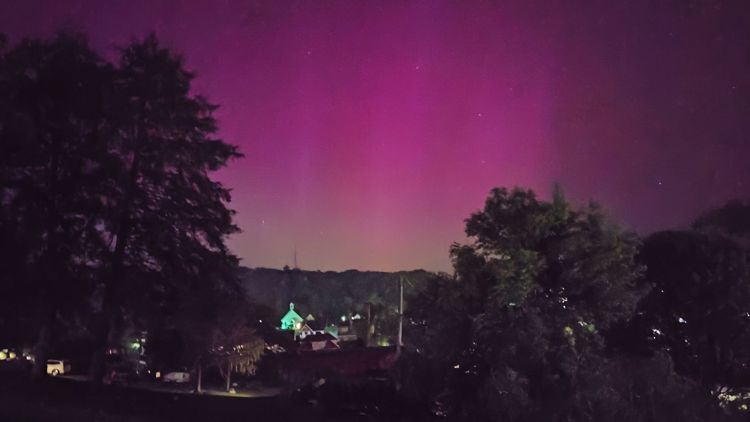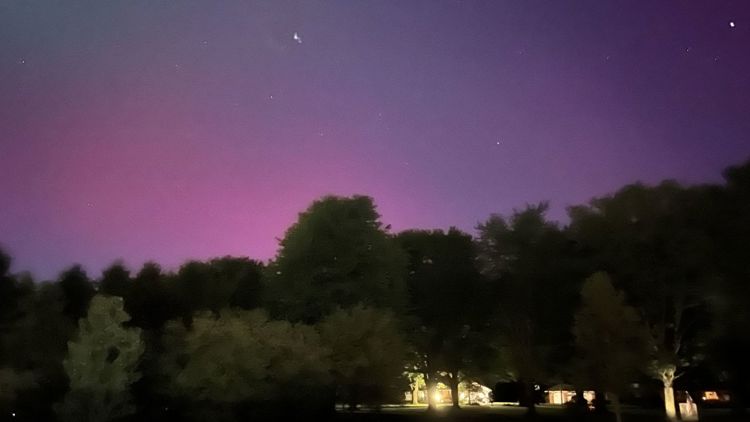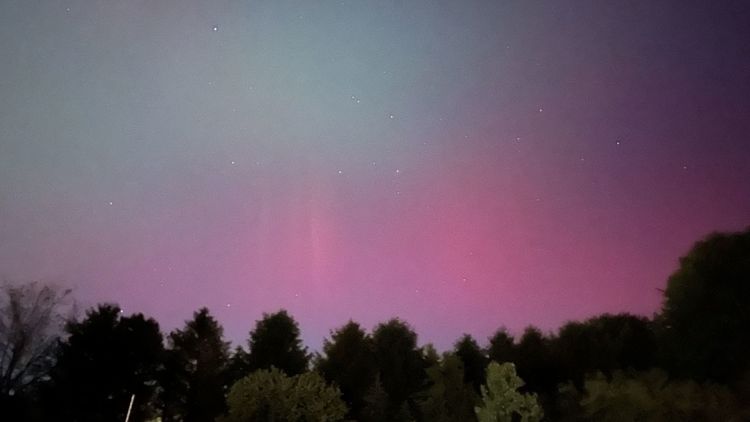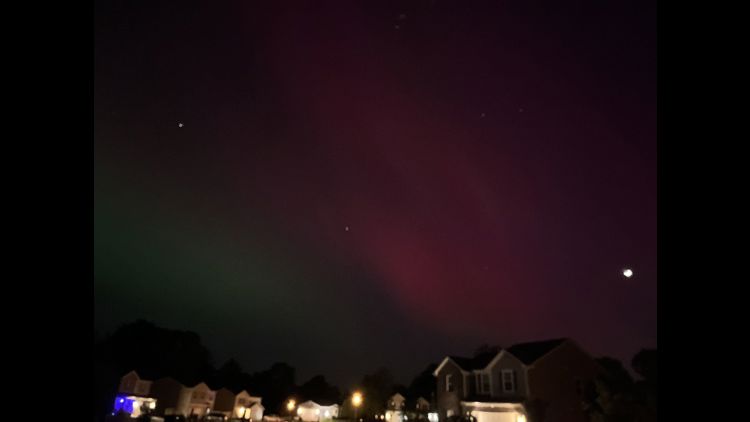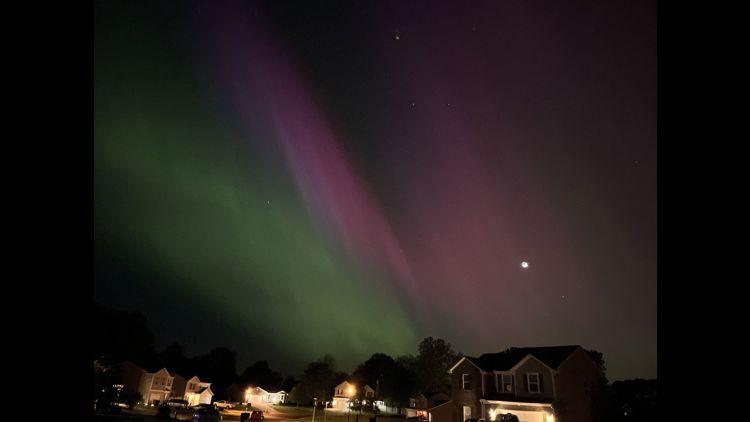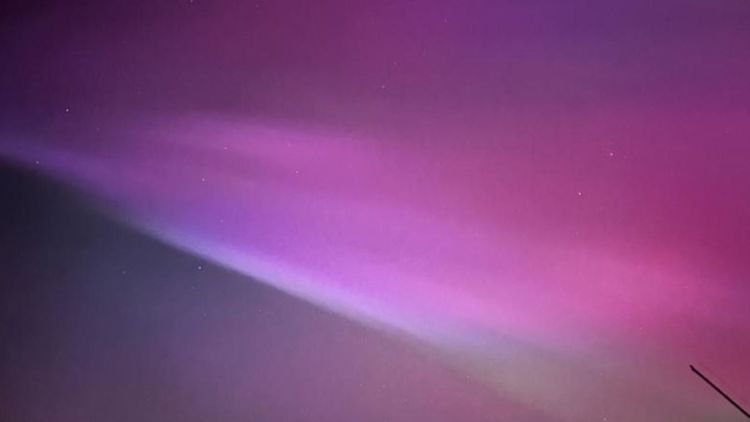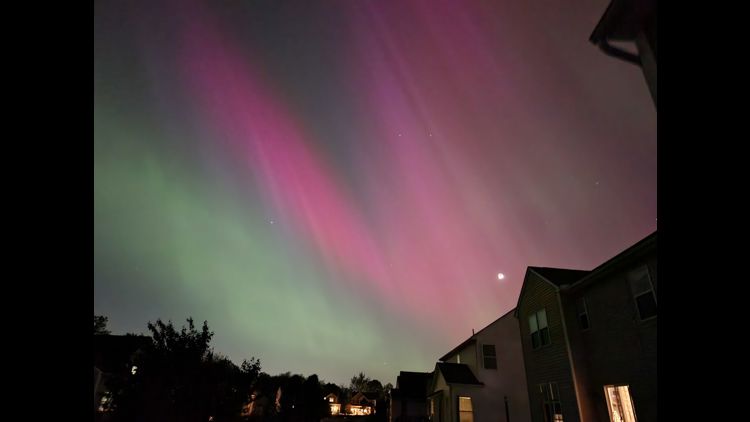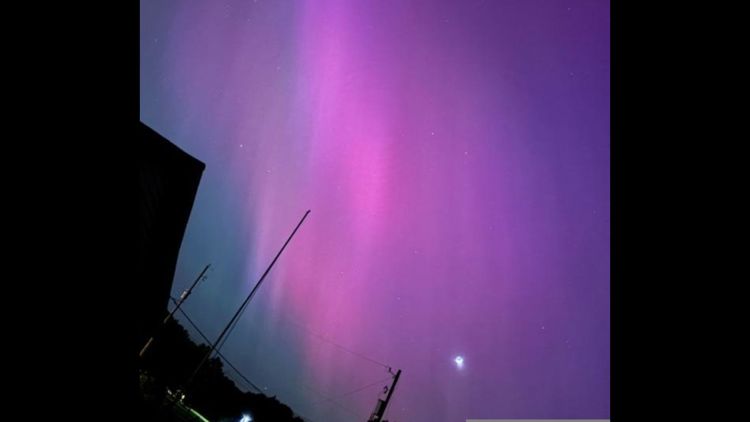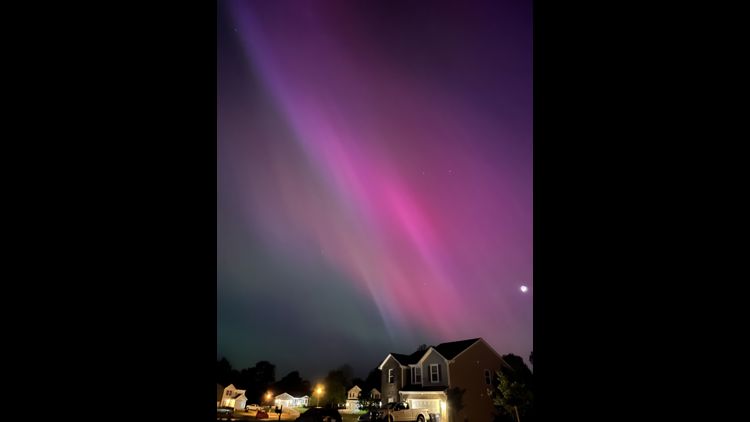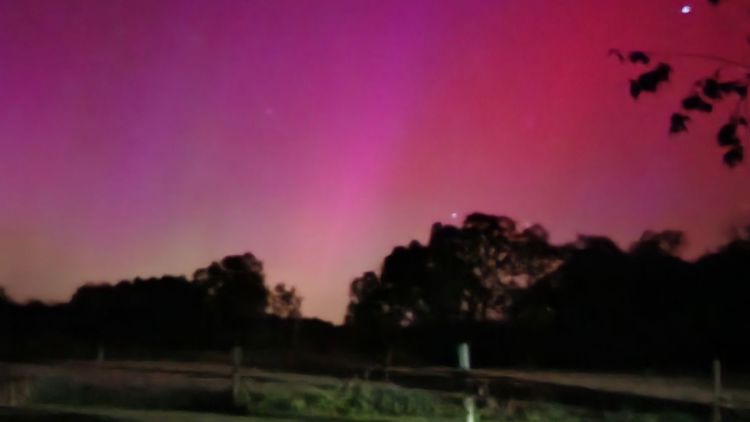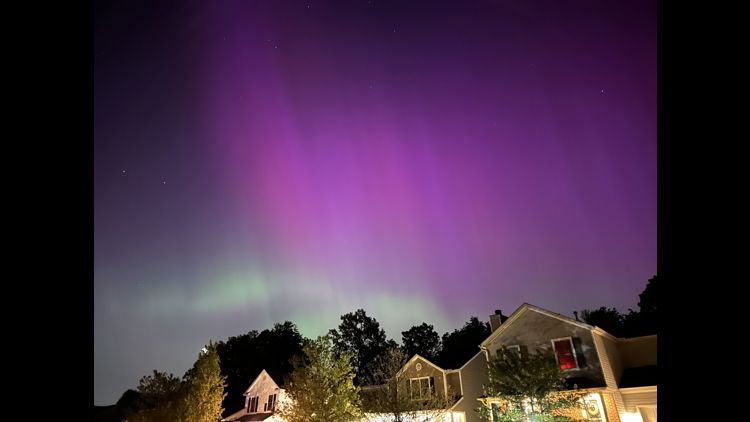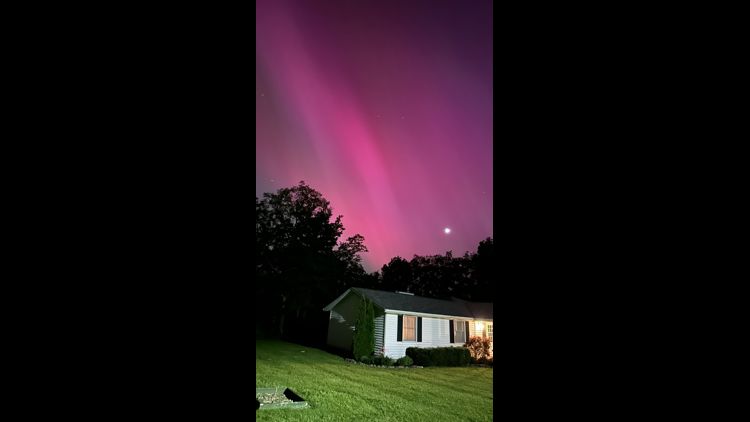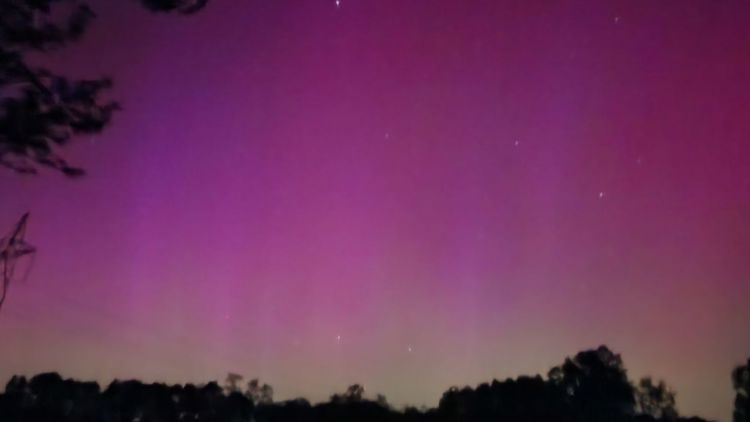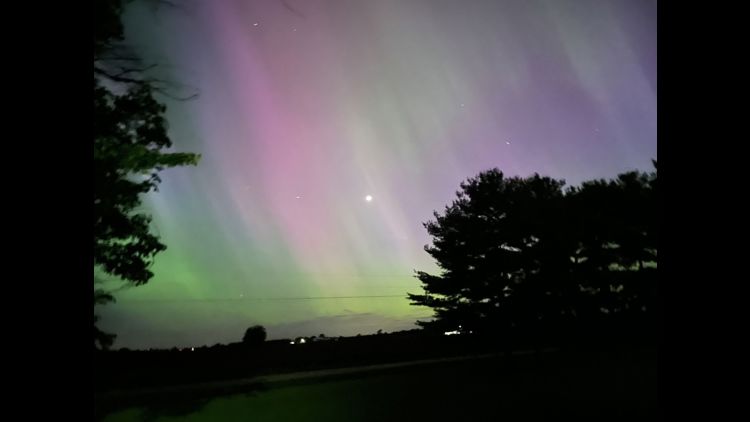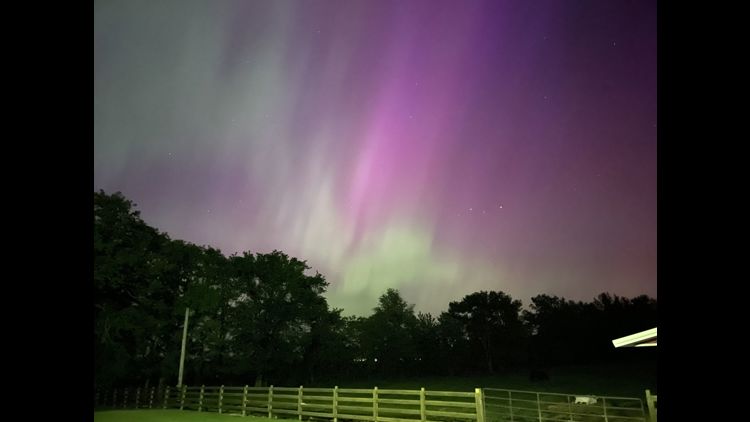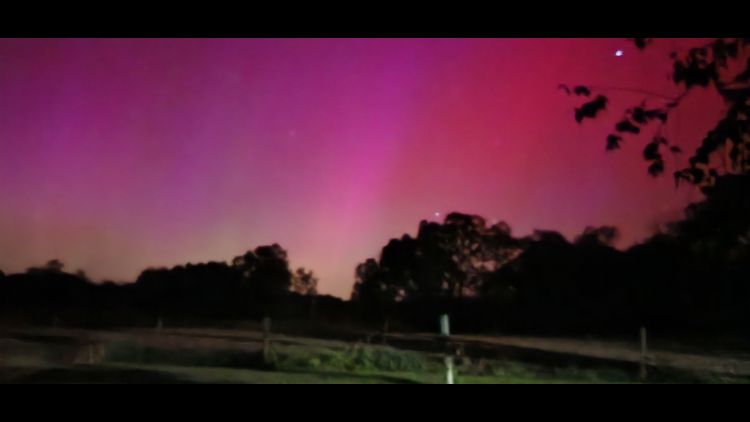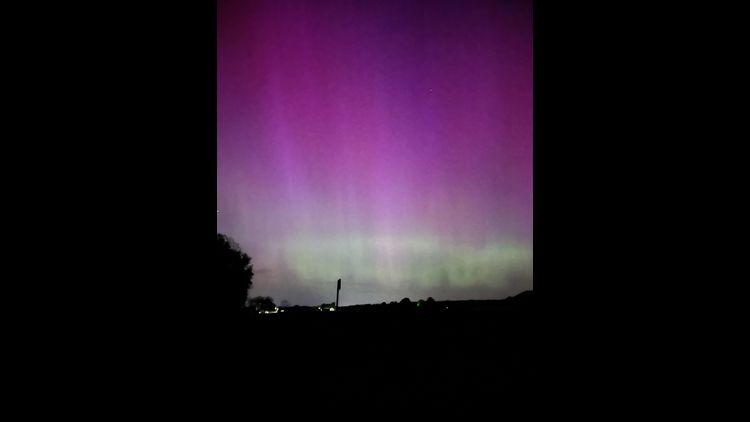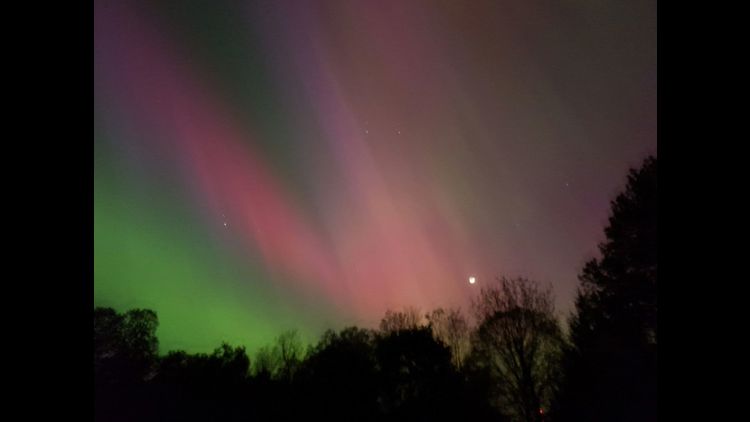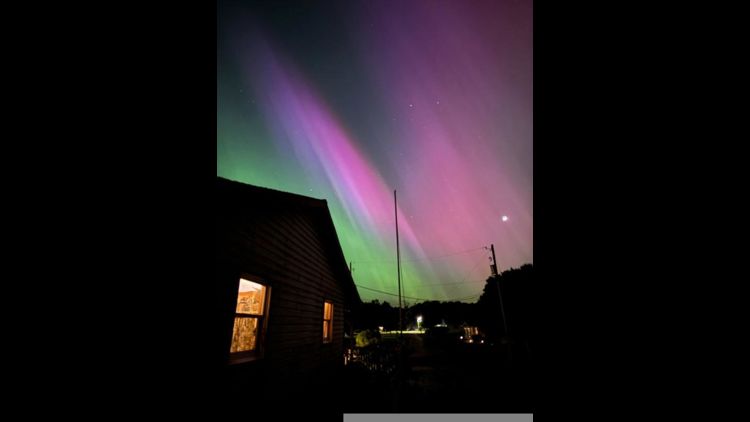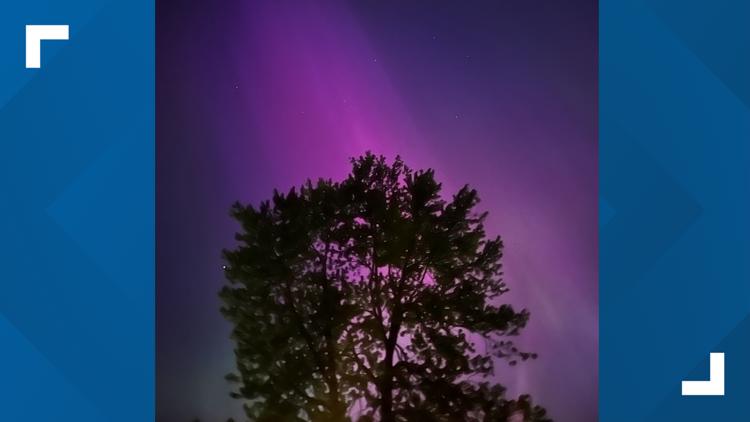COLUMBUS, Ohio — People across the state were able to catch glimpses of the northern lights from their backyards this weekend due to a rare severe geomagnetic storm.
Many Ohioans stayed up to watch beautiful displays of green, pink and blue lights from the aurora borealis.
Rob Steenburgh, a scientist with NOAA’s Space Weather Prediction Center, said, “That’s really the gift from space weather: the aurora."
He and his colleagues said the best views may come from phone cameras, which are better at capturing light than the naked eye.
Northern lights across central Ohio
A geomagnetic solar storm watch was issued as a warning from the U.S. National Oceanic and Atmospheric Administration about potential activity on the sun's surface that could send waves of high-energy particles shooting toward the earth. When these particles hit the planet, they have the ability to mess with satellite communication systems, cause GPS problems and prevent high-frequency radios from working.
NOAA predicted that strong flares will continue through at least Sunday, and a spokeswoman said via email that the agency's Space Weather Prediction Center had prepared well for the storm.
The powerful solar storm caused what appeared to be only minor disruptions to the electric power grid, communications and satellite positioning systems.
The U.S. National Oceanic and Atmospheric Administration said extreme geomagnetic storm conditions continued Saturday, and there were preliminary reports of power grid irregularities, degradation of high-frequency communications and global positioning systems.
But the Federal Emergency Management Agency said that, so far, no FEMA region had reported any significant impact from the storms. The U.S. Department of Energy said Saturday it is not aware of any impact from the storms on electric customers.
On Saturday morning, SpaceX's Starlink satellite internet service said on its website that service had been degraded and its team was investigating. CEO Elon Musk wrote on the social platform X overnight that its satellites were “under a lot of pressure, but holding up so far.”
In the U.S., Friday’s solar storm pushed the lights much farther south than normal. The Miami office of the National Weather Service confirmed sightings in the areas of Fort Lauderdale and Fort Myers, Florida.
People in Kansas, Nebraska, Iowa, Michigan, Ohio, Minnesota and other Midwestern states were able to capture photos of bright colors along the horizon. It's a rare sight since a storm this powerful hasn't happened in 20 years.
NOAA issued a rare severe geomagnetic storm warning when a solar outburst reached Earth on Friday afternoon, hours sooner than anticipated.
The agency alerted operators of power plants and orbiting spacecraft, as well as FEMA, to take precautions.
“For most people here on planet Earth, they won’t have to do anything,” said Rob Steenburgh, a scientist with NOAA’s Space Weather Prediction Center.
The most intense solar storm in recorded history, in 1859, prompted auroras in Central America and possibly even Hawaii.
An extreme geomagnetic storm in 2003 took out power in Sweden and damaged power transformers in South Africa.
Even when the storm is over, signals between GPS satellites and ground receivers could be scrambled or lost, according to NOAA. But there are so many navigation satellites that any outages should not last long, Steenburgh noted.
The sun has produced strong solar flares since Wednesday, resulting in at least seven outbursts of plasma. Each eruption, known as a coronal mass ejection, can contain billions of tons of plasma and magnetic field from the sun’s outer atmosphere, or corona.
The flares seem to be associated with a sunspot that is 16 times the diameter of Earth, NOAA said. It is all part of the solar activity ramping up as the sun approaches the peak of its 11-year cycle.



